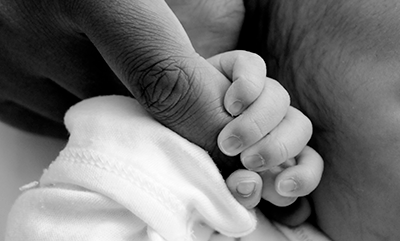Maternal Mortality Rising in US, with Wide Disparities.
 Despite a worldwide decline in maternal mortality from 1990 to 2015, the incidence has risen in the US in recent years, with death rates of non-Hispanic black mothers almost three times those for whites and Hispanics, according to a new study co-authored by a School of Public Health researcher.
Despite a worldwide decline in maternal mortality from 1990 to 2015, the incidence has risen in the US in recent years, with death rates of non-Hispanic black mothers almost three times those for whites and Hispanics, according to a new study co-authored by a School of Public Health researcher.
The study, published in the journal Obstetrics & Gynecology, calls for efforts to improve reporting of maternal mortality data to identify trends and at-risk populations, and to guard against over-reporting. It also reaffirms findings of widespread racial and ethnic disparities in mortality, with deaths of black women 2.8 times more likely than whites and 3.6 times more likely than Hispanics, in 27 states and the District of Columbia.
Researchers examining deaths of women while pregnant or within 42 days of the end of pregnancy—based on a new US standard pregnancy question on death certificates—found that the maternal mortality rate increased by 23 percent from 2009 to 2014 in the 27 states and DC. The only significant increases in rates were for women ages 40 and older, which were 18 times higher than for women ages 25–29, the lowest risk group.
About one-third of the reported maternal deaths in 2013–2014 were of women 40 and older, compared with just 3 percent of live births, suggesting what the authors said was “a possible over-reporting of maternal deaths of older women” that should be further examined.
“Large increases in maternal mortality rates for older women and among nonspecific causes suggest possible data-quality problems that may be worsening over time,” the study says. Using the recently added standard pregnancy “checkbox” question to report on maternal deaths can be problematic because it may inadvertently be checked “even if the woman is not pregnant or postpartum,” or the death is unrelated to pregnancy.
Study co-author Gene Declercq, professor of community health sciences, said the study is further confirmation that maternal mortality in the US “continues to rise, at a time when it is dropping internationally.” He noted that while the US “continues to have maternal mortality rates for non-Hispanic blacks that are several times that of whites, the rate for whites alone is still higher than virtually all other industrialized countries.”
Worldwide, maternal mortality declined 44 percent from 1990 to 2015. Among the US states studied, death rates declined slightly for women younger than 25 and increased slightly for women ages 25–29, although the changes were not statistically significant.
The authors modeled the potential effect of over-reporting of pregnant or postpartum status with use of the pregnancy checkbox, finding that a 1 percent false-positive rate would increase mortality rates by 26 percent for women younger than 40, and more than 230 percent for women ages 40–54.
“Quality improvement efforts need to focus on improving the quality and validity of the new pregnancy checkbox data,” the authors said. “Periodic validation studies and the implementation of data quality checks at both the state and national levels are essential to improving reporting.”
The study was led by Marian MacDorman of the Maryland Population Research Center, University of Maryland. Marie Thoma of the University of Maryland was a co-author.